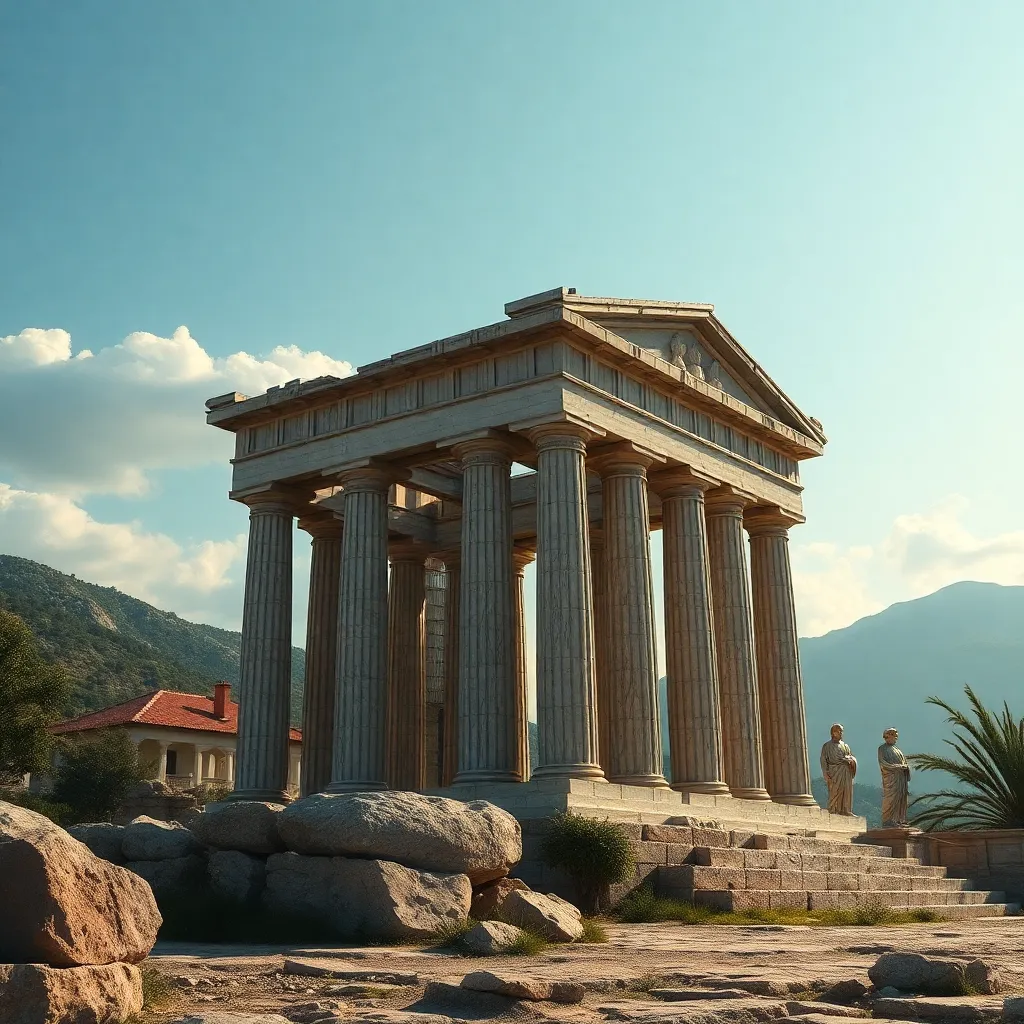The Olympians and Their Legends: How Myths Explain Natural Phenomena
Introduction to Olympian Mythology
In ancient Greek culture, the Olympian gods held a revered position, embodying the forces of nature and the complexities of human experience. These deities were not merely figures of worship; they were central to understanding the world around the Greeks. Myths served as a crucial framework through which ancient societies explained natural phenomena, offering narratives that linked the divine with the earthly.
The Olympians: A Brief Overview
The Olympian pantheon comprises twelve primary gods and goddesses, each presiding over distinct aspects of life and nature. Here are some of the most significant figures:
- Zeus: King of the gods, associated with the sky, thunder, and lightning.
- Hera: Queen of the gods, protector of marriage and family.
- Poseidon: God of the sea and earthquakes, known as the Earthshaker.
- Demeter: Goddess of agriculture, fertility, and the harvest.
- Athena: Goddess of wisdom, war, and crafts.
- Hades: God of the underworld, overseeing the realm of the dead.
Each deity represented not only a specific domain but also embodied the natural elements that were crucial to Greek life, from the stability of the earth to the unpredictability of the seas.
Myths as Explanations for Natural Phenomena
Myths served a fundamental purpose in ancient societies: they provided explanations for the mysteries of the natural world. Through storytelling, the Greeks articulated their understanding of weather patterns, seasonal changes, and natural disasters. These narratives helped to make sense of the unpredictable forces of nature and offered a sense of control over circumstances that could otherwise be terrifying.
For instance, when storms ravaged the land, the people would recount tales of Zeus wielding his thunderbolt, a powerful reminder of his authority over the skies. Similarly, the shifting seasons were explained through the myth of Demeter and her daughter Persephone, illustrating how the natural world was intertwined with divine relationships.
Zeus and the Power of Thunderstorms
Zeus, the king of the Olympian gods, was primarily associated with the sky and thunder. His mythology is rich with stories that highlight his power over storms and weather.
One of the most famous tales is that of Zeus’s battle with the Titans, where he unleashed thunderbolts to assert his dominance. These lightning strikes were not only a symbol of his power but also a source of awe and fear for the ancient Greeks.
The importance of thunderstorms in agriculture cannot be overstated. Farmers prayed to Zeus for rain, which was essential for crops. The myth of Zeus emphasizes the dual nature of natural phenomena: as a source of life through rain and a potential destroyer through storms.
Poseidon: The Earthshaker and Sea God
Poseidon, known as the Earthshaker, was revered as the god of the sea and earthquakes. His myths were crucial for explaining the tumultuous nature of the ocean and the earth’s movements.
One notable myth tells of Poseidon creating the horse as a gift to humanity, symbolizing his connection to both land and sea. His ability to stir the waters and cause seismic upheavals made him a powerful figure among coastal communities and sailors.
The cultural impact of Poseidon’s myths was profound. Coastal towns honored him with temples and festivals, acknowledging his vital role in their livelihoods and safety. The fear of earthquakes and tsunamis led to reverence and rituals to appease Poseidon, showcasing how myths served both to explain and to provide a sense of security in an unpredictable world.
Demeter and the Cycle of Seasons
The myth of Demeter and her daughter Persephone offers a poignant explanation of the cycle of seasons and agricultural practices. Demeter, the goddess of the harvest, is deeply connected to fertility and the earth’s productivity.
According to the myth, Persephone is abducted by Hades, leading to Demeter’s grief and withdrawal of fertility from the earth. This results in winter, a time of barrenness. When Persephone returns in spring, Demeter rejoices, and the earth flourishes once more.
This myth encapsulates the ancient Greek understanding of growth, decay, and rebirth, reflecting their agricultural practices and the importance of seasonal cycles for survival.
Hades and the Underworld: Myths of Death and Rebirth
Hades, the god of the underworld, plays a significant role in myths surrounding life, death, and the afterlife. His realm is often viewed with fear and reverence, and myths regarding Hades explain the inevitability of death and the belief in an afterlife.
The connection between Hades and the changing seasons ties back to the myth of Demeter and Persephone. When Persephone descends into the underworld, it signals the onset of winter, while her return heralds spring. This cyclical nature mirrors agricultural practices and the belief in regeneration and rebirth.
The Enduring Legacy of Olympian Myths in Modern Culture
The myths of the Olympian gods continue to resonate in modern culture, influencing literature, art, and popular media. These ancient stories provide a lens through which we can understand human emotions, relationships, and our connection to nature.
From contemporary novels and films to artwork and theater, the themes of love, power, and morality found in these myths remain relevant. They encourage reflection on our relationship with the environment and the forces that govern our world, inviting us to consider the legacies of the past as we navigate the challenges of the present.
Conclusion
The myths of the Olympian gods serve as vital narratives that explain the natural phenomena observed by ancient Greeks. Through their stories, we gain insight into how these early societies interpreted the world around them, imbuing the forces of nature with divine significance.
As we reflect on these enduring tales, we recognize their continued relevance in understanding our relationship with nature, reminding us that the search for explanations and meaning is timeless.




